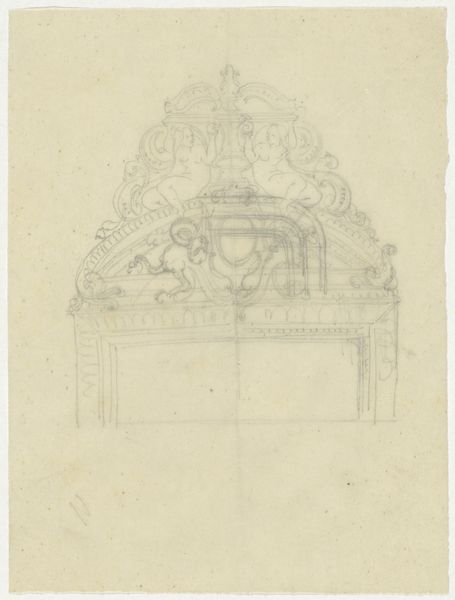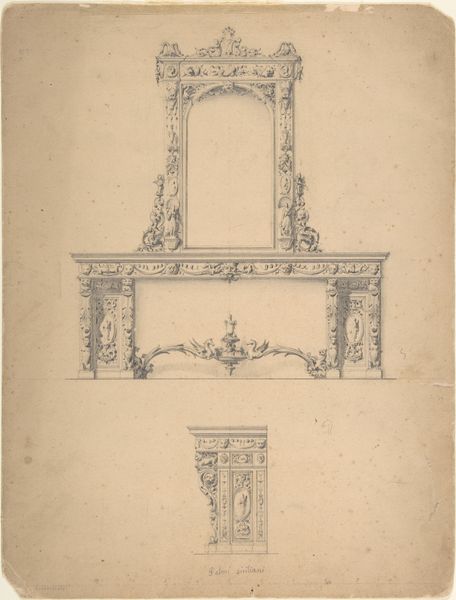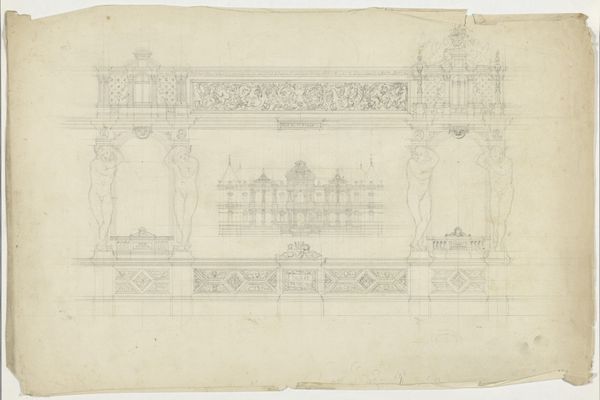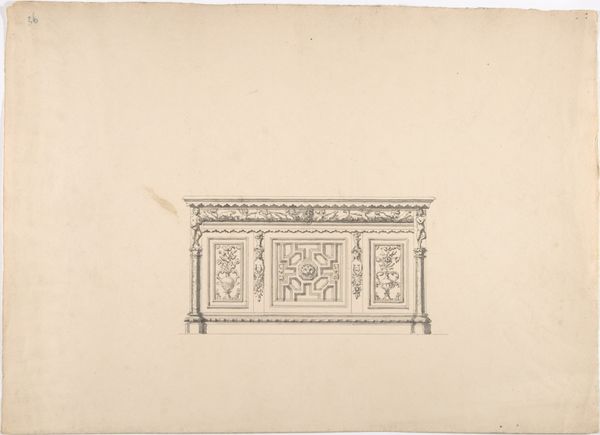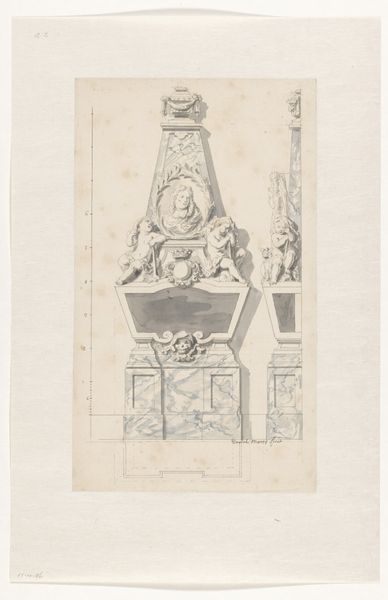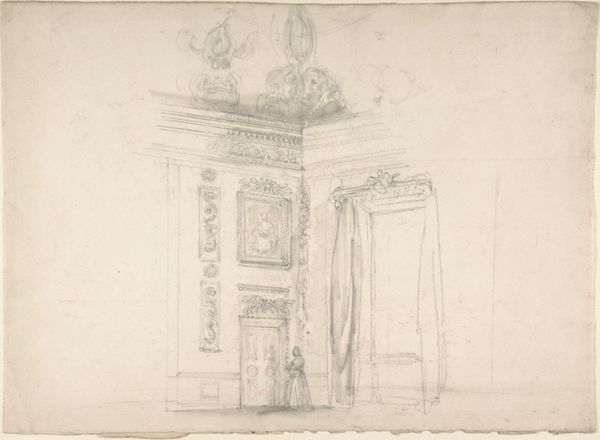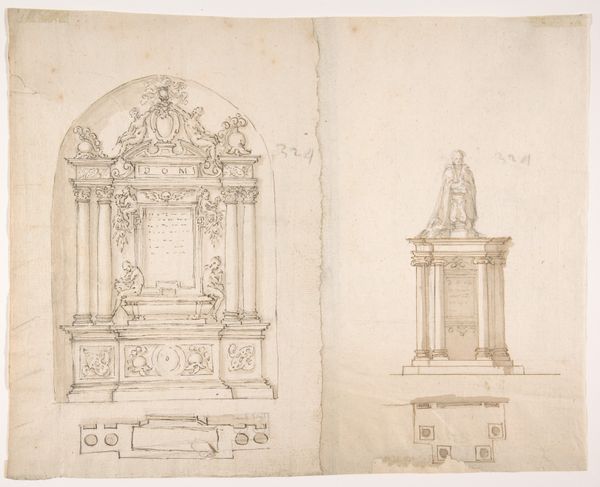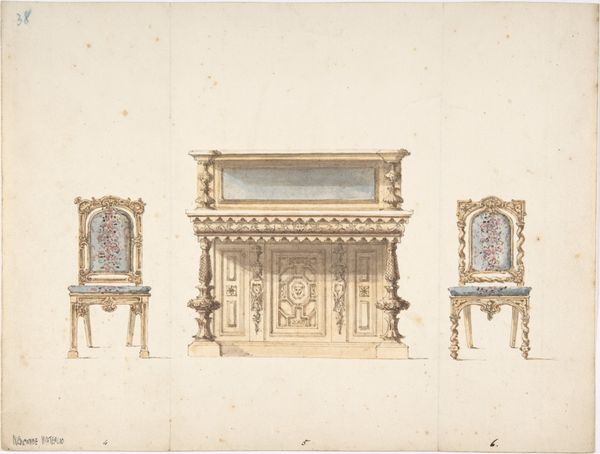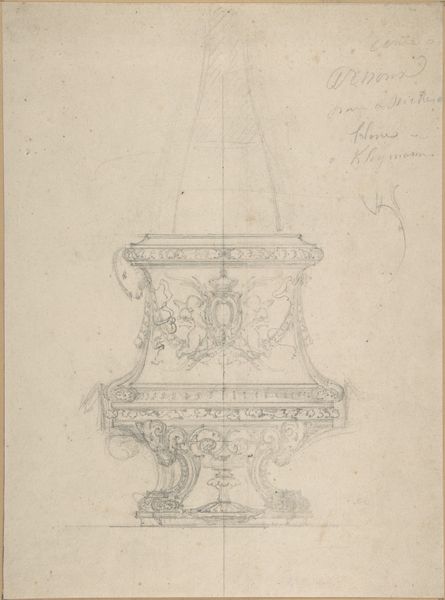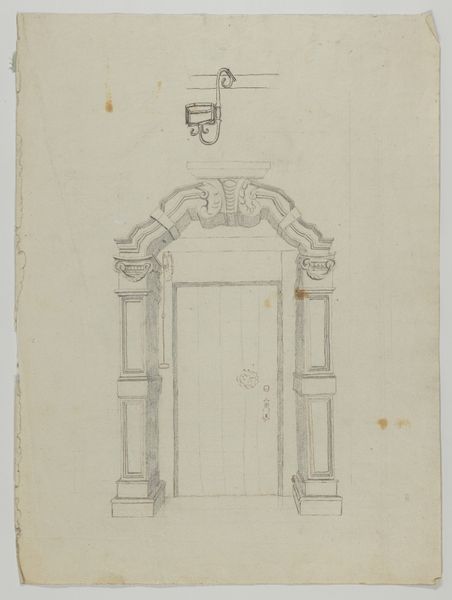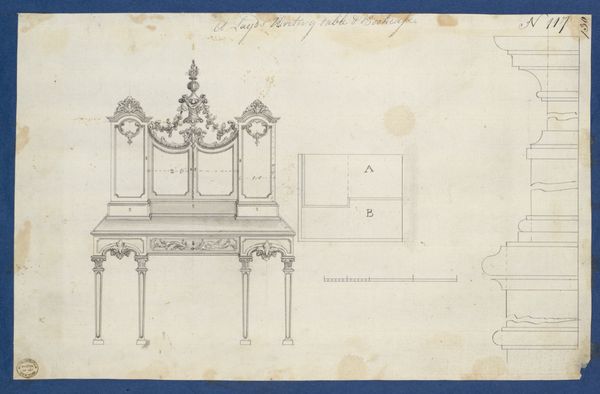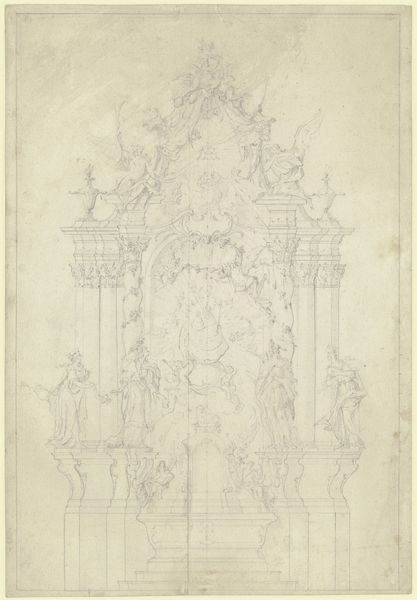
drawing, print, paper, pencil
#
drawing
#
neoclacissism
# print
#
paper
#
pencil
#
decorative-art
Dimensions: Sheet: 9 5/8 × 12 5/8 in. (24.4 × 32.1 cm)
Copyright: Public Domain
Editor: So this drawing, "Designs for Furniture," dating back to sometime between 1800 and 1900, gives us a glimpse at a potential Neoclassical interior. It’s currently held at the Met. What strikes me is the incredible detail rendered just in pencil, almost delicate despite the grand scale implied. How do you interpret this work, considering its design elements? Curator: Observing purely from a formalist standpoint, the emphasis on symmetry is paramount. Consider how each design embodies a balanced distribution of elements. The verticality in the cabinet design is counteracted by the horizontal emphasis on the chair and stool designs. This structural opposition guides the eye smoothly, doesn’t it? Editor: Yes, I see what you mean. But isn’t the ornament a bit much? Curator: Ornamentation is an intrinsic part of the design’s aesthetic vocabulary. It is not mere embellishment but crucial to understanding the style and intention of the design. Notice how it is not simply decoration, but part of a rigorous composition, delineating specific forms. This integrated approach adds to its unique quality and enhances the overall impact. Editor: I suppose seeing it as a visual language instead of mere frills does change things. I was getting caught up on thinking about excess and comfort, and didn't think about design. Curator: Precisely! This forces a question regarding how this impacts perception. Through strict lines and ornamentation, how does it convey intent, create forms, or challenge the notions? Editor: I hadn't considered analyzing the individual forms rather than the furniture as a whole! It provides an alternative way to appreciating artwork beyond any one context. Curator: Absolutely. And such observation might reshape our perceptions of the design's aesthetic merits.
Comments
No comments
Be the first to comment and join the conversation on the ultimate creative platform.
